A review of Sanctuary: Global Oases of Innocence –a Dancing Star Foundation book by Michael Charles Tobias and Jane Gray Morrison, with a Foreword by the Queen of Bhutan, Her Majesty Ashi Dorji Wangmo Wangchuck
Sanctuary arrived at my door in early August, providing a welcome break from a summer dominated by stories of hate, violence, and intolerance. Opening the book, I immediately found solace among the familiar scenes of Alaska’s coastal glaciers that beautifully illustrate the first chapter. I willfully dove in, submerging myself in the stories of inspiring efforts driven by care for the natural world.
For a week, I started my morning by eagerly re-opening to the next chapter and entering one of these slivers of sanctuary; the authors’ captivating photographs, writings, ecological knowledge and appreciation for the natural wonders that surround us temporarily transporting me to places both near and far.
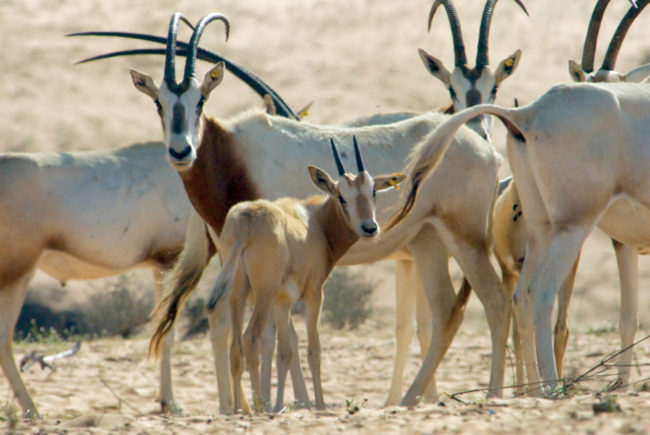
I explored the novel in The Birth of an Oryx: Al Areen Wildlife Sanctuary, the Kingdom of Bahrain and knowingly appreciated the familiar in A Little Bird in the Largest Protected Area on Earth: Wrangell-Saint Elias National Park and Preserve, Alaska.
![Caudiciforms [bottle trees] (Adenium obesum socotranum), Socotra, Yemen, © M. C. Tobias](https://mahb.stanford.edu/wp-content/uploads/2016/09/DSC_0626-650x432.jpg)
In the stories of places I have been fortunate to visit, I found myself learning about their natural history, reminiscing on the feelings inspired by my time there, longing to return, and thanking the people whose energy went into fighting for their existence. Places new to me brought amazement of the curious wonders, like the bottle trees of Socotra, Yemen, that exist in this world and the people who tirelessly work for their protection.

It was with reluctance that I turned from the book back to the reality of my day, but I did so with renewed awe in the world and hope in our capacity to care for it.

Conservation leaders often debate the effectiveness of the myriad approaches and methods practiced to promote a flourishing world. Research and theories abound for how to ‘best’ protect natural wonders –discord even exists on how to define ‘best’. In the midst of this debate Sanctuary refreshingly presents various methods side-by-side: border-crossing protected lands, farm animal sanctuaries, park boundary communities, and city gardens. Sanctuary does not prescribe one course of action, rather it shares the broad range of ways the caring nature of people manifests into action to protect this incredible world we inhabit.

Whether trying to re-wild the Netherlands with European brown bears, to protect Namibian wild dog packs on a private reserve, to save orangutan cultures in Kalimantan, Indonesian Borneo, vast stretches of pristine neotropics in Suriname, abandoned animals of all biological persuasion in a most unlikely paradise in Salzburg, to celebrate the more than 30 million people who come for solace in New York’s Central Park each year, the incredibly important last remaining relic Pleistocene forests of Białowieża in Poland and Belarus, or indigenous peoples and their ecosystems in eastern Bhutan and southern India, the book’s moral compass is premised on the unsurpassed truth that dedicated people of conviction can make all the difference in the world.
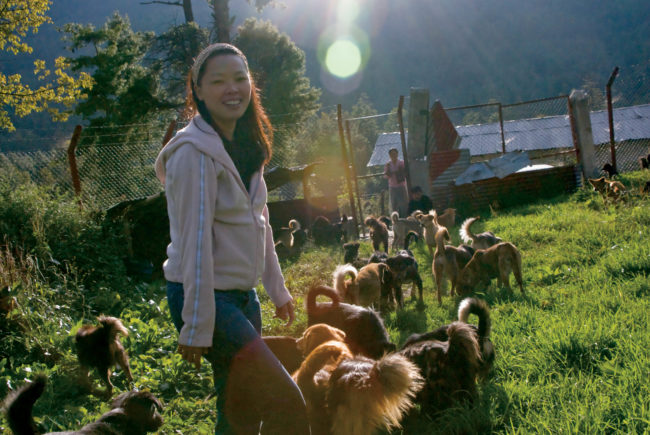
The sanctuary movement has shown us that each project has a critical role to play; each individual can make a huge difference. The legacy we leave the Earth should celebrate kindness and compassion… Every living being is inherently valuable by dint of the miracle of its life.
Despite being published in 2008, this book and its messages remain as relevant today as they were then –if not more so. The stories featured by Michael and Jane are far from finished:

The Ancient Białowieża Forest located along the Polish-Belarussian border, described by the authors as, “…one of the sanctuaries in the world for both the living and the dead; a place that both scientifically and emotionally recognizes the interdependency of these two facets of biology,” faces major destruction. Refuge for the iconic European bison and resting place for many Polish people killed during WWII, the forest holds tremendous ecological and cultural importance. Yet, in March of this year the Polish Minister of the Environment passed an updated Forest Management Plan that includes a significant increase in logging and removal of the tree snags that shape the forest’s unique groundcover.
In Sanctuary we are introduced to Professor Tomasz Wesołowski with the Biological Sciences Department of Wrocław University, and the tireless work he was doing to protect woodpeckers and other birds that use tree cavities for nesting. This work continues, as he has joined other scientists and concerned citizens to fight against this forest management plan and advocate for protection of the whole Białowieża Forest.

In Borneo’s Tajung Puting National Park, illegal logging and mining along with slash and burn agricultural practices continue to threaten the orangutans who rely on the park’s forests. And Dr. Biruté Mary Galdikas continues to work determinedly for their protection as the president of Orangutan Foundation International. Expanding palm oil plantations constrict the primary forest habitats of orangutans, and fires due to slash and burn practices pose a daunting threat to the park’s critical peat swamp forests. In addition to OFI’s forest protection program, Indonesia’s Friends of the National Park have multiple habitat restoration projects underway. Both groups are passionately defending orangutans from the many environmental challenges facing Borneo.

These evolving stories provide a blueprint for action, across borders, definitions, and modalities for protecting life on earth. As the human presence on Earth continues to grow and apply ever increasing pressure on the creatures we should be sharing it with, new inspiring actions are taking root. The successes shared in Sanctuary push them to stay true to two critical realities: that individuals can make a difference, and teams working to save other life forms are essential in a world where conservation teamwork is everything.
Despite the human turmoil in this world and its inordinate power over the rest of the Creation, we are hopeful, even optimistic, knowing that such special people are out there. They are working assiduously to safeguard these incredible oases with all their denizens, and by collective aspiration must ultimately succeed at restoring ecological balance and refurbishing this sanctuary, our one earth. Our home.
I urge you to open yourself to Sanctuary –read it, look through it, enjoy it, allow it to transport you to incredible places and be reminded of the wonder this world holds. Also be reminded of the goodness we possess and how powerful it can be if translated into action.

You can learn more about the book here.
Select images from Sanctuary shared by the authors M.C. Tobias and J.G. Morrison
Click images for larger versions


Tomasz Wesołowski Working in Białowieża National Park, Poland © M.C. Tobias

Wild Burros in the Protected Highlands of Socotra, Yemen, © M.C. Tobias

Female Arabian Oryx, Born Ten Minutes Before, Al Areen, Bahrain, © M.C. Tobias

Victoria Crowned Pigeon, New Guinea, © M.C. Tobias

In the All Vegetarian City of Pushkar, Rajasthan, India, © J.G. Morrison
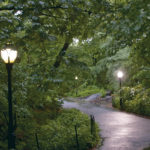
Central Park, 5:30 am, Manhattan, New York, © M.C. Tobias

European Brown Bears at Alertis Sanctuary, The Netherlands, © M.C. Tobias

Conversing Bovine at a U.S. Sanctuary © J.G. Morrison

Gallus gallus and Human Friend at a New Zealand Sanctuary, © J.G. Morrison

Brokpa Children, Eastern Bhutan, © M.C. Tobias
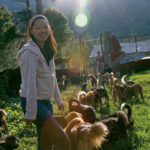
Ms. Tashi Payden at a Dog Sanctuary in Western Bhutan, © J.G. Morrison

Adult Cheetah at a Southern African Wildlife Sanctuary, © M.C. Tobias

White Rhino Family on Private Sanctuary, South Africa, © M.C. Tobias
![Caudiciforms [bottle trees] (Adenium obesum socotranum), Socotra, Yemen, © M.C. Tobias](https://mahb.stanford.edu/wp-content/uploads/2016/09/DSC_0626-150x150.jpg)
Caudiciforms [bottle trees] (Adenium obesum socotranum), Socotra, Yemen, © M.C. Tobias
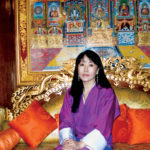
Her Majesty, Queen of the Fourth King of Bhutan, Ashi Dorji Wangmo Wangchuck, © J.G. Morrison

Rookeries at the Farallon National Wildlife Refuge, California, © M.C. Tobias

Wild Wisent, Białowieża National Park, Poland, © M.C. Tobias

Moss Garden in Kyoto, Japan © J.G. Morrison



Wild Horses on UNESCO Protected Site, Rapa Nui (Easter Island), Chile, © M.C. Tobias

Young Orangutan at Tanjung Puting National Park, Kalimantan, Indonesian Borneo, © J.G. Morrison

Amid the Largest Protected Pack of African Wild Dogs at Harnas Sanctuary, Namibia, © M.C. Tobias

Silent Valley National Park, Tamil Nadu, India, © M.C. Tobias

Wild Iberian Wolf Friend, Grupo Lobo, Portugal, © M.C. Tobias

Mount St. Elias, Alaska, © M.C. Tobias

Marieta van der Merwe and Friend, Harnas Sanctuary, Namibia, © M.C.Tobias
The views and opinions expressed through the MAHB Website are those of the contributing authors and do not necessarily reflect an official position of the MAHB. The MAHB aims to share a range of perspectives and welcomes the discussions that they prompt.

